 https://california-business-lawyer-corporate-lawyer.com/wp-content/uploads/2025/12/Is-Weight-Discrimination-Illegal-in-California-A-Clear-Look-at-Protections-Risks-and-Employer-Duties.jpg
803
1196
Amit
http://california-business-lawyer-corporate-lawyer.com/wp-content/uploads/2022/05/Nakase-Wade-logo-transparent-200x54px.png
Amit2025-12-19 12:36:022025-12-19 12:36:04Is Weight Discrimination Illegal in California? A Clear Look at Protections, Risks, and Employer Duties
https://california-business-lawyer-corporate-lawyer.com/wp-content/uploads/2025/12/Is-Weight-Discrimination-Illegal-in-California-A-Clear-Look-at-Protections-Risks-and-Employer-Duties.jpg
803
1196
Amit
http://california-business-lawyer-corporate-lawyer.com/wp-content/uploads/2022/05/Nakase-Wade-logo-transparent-200x54px.png
Amit2025-12-19 12:36:022025-12-19 12:36:04Is Weight Discrimination Illegal in California? A Clear Look at Protections, Risks, and Employer Duties
By: Douglas Wade, Attorney
Email | Call (800) 484-4610
Who are the exempt employees in California?
Under California law, all employees are presumed to be non-exempt, and if a claim is filed, the employer has the burden of proving the employee is exempt. An exempt employee is so-called because they are exempt from benefits, such as overtime and wage and hour requirements. There are strict conditions around the exempt status, and the employer must pay attention to what they are exempt from and what conditions still apply. Employment lawyers or HR professionals can advise on this.
1. California Executive Exemption
Executives and managers are exempt if they meet all of these requirements:
- The employee is responsible for managing a department of the company.
- They manage at least two employees.
- They have the authority to fire or hire employees or their recommendations for recruiting, or promotion is given weight.
- The employee is able to and regularly exercise independent judgement and discretion in their duties.
- Their primary duties meet the exemption test. These are the duties that make up 50% or more of their daily duties.
- The employee’s monthly salary is at least two times the full-time state minimum wage.
2. Administrative Exemption California
Administrative professionals must meet all of the following requirements to be exempt:
- 50% or more of their duties must be administrative in nature, such as general business operations or management policies.
- The employee is able to regularly exercise independent judgement and discretion in duties which are significant to the business operations.
- They perform their duties with only general supervision, and their duties require specific technical knowledge or experience.
- Their salary is at least twice the minimum wage.

3. Computer Professional Exemption
IT professionals must meet all of the following requirements to be exempt:
- The primary duties of the employee are creative or intellectual in nature.
- Their primary duties are one of the following:
- Applying systems analysis procedures and techniques
- Testing, modifying, documenting, or creating computer programs
- Designing, analysing, creating, developing, or modifying computer programs or systems.
- The employee is highly skilled in the practical and theoretical application of specialised IT knowledge.
- The hourly rate or annual salary must meet the DLSR’s minimum threshold.
4. Inside Sales Exemption
Inside sales employees must meet all the following requirements to be exempt:
- Employee’s wages or salary must be at least 1.5 times California’s minimum wage.
- At least 50% of the employee’s compensation is commission.
The inside sales exemption only applies to overtime, and the employee must still receive benefits such as meal and rest breaks, minimum wage, and time recording.
5. Outside Sales Exemption
Outside sales employees must meet all the following requirements to be exempt:
- The employee must be 18 years old or over.
- 50% or more of their work time must be performed away from the employer’s workplace.
- The employee’s main duties must involve selling service, contracts for products, tangible items, or facility use.
Learn more about: Business | Corporate | Employment
 https://california-business-lawyer-corporate-lawyer.com/wp-content/uploads/2025/12/Is-Weight-Discrimination-Illegal-in-California-A-Clear-Look-at-Protections-Risks-and-Employer-Duties.jpg
803
1196
Amit
http://california-business-lawyer-corporate-lawyer.com/wp-content/uploads/2022/05/Nakase-Wade-logo-transparent-200x54px.png
Amit2025-12-19 12:36:022025-12-19 12:36:04Is Weight Discrimination Illegal in California? A Clear Look at Protections, Risks, and Employer Duties
https://california-business-lawyer-corporate-lawyer.com/wp-content/uploads/2025/12/Is-Weight-Discrimination-Illegal-in-California-A-Clear-Look-at-Protections-Risks-and-Employer-Duties.jpg
803
1196
Amit
http://california-business-lawyer-corporate-lawyer.com/wp-content/uploads/2022/05/Nakase-Wade-logo-transparent-200x54px.png
Amit2025-12-19 12:36:022025-12-19 12:36:04Is Weight Discrimination Illegal in California? A Clear Look at Protections, Risks, and Employer Duties
Can I Refuse to Sign a Written Warning at Work?

Is Nepotism Illegal in California? What the Law Allows and Prohibits

Salary Requirements California: Minimum Pay, Exempt Status, and Overtime Rules

Borello Test Explained: Worker Classification Rules in California
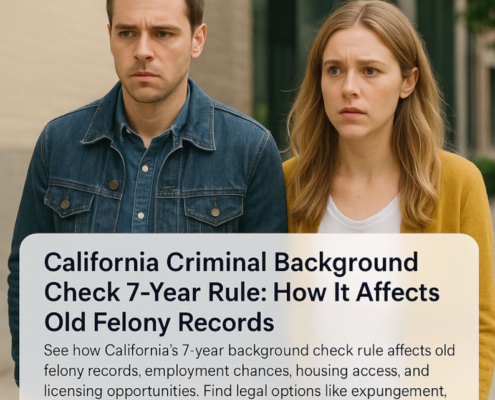
California Criminal Background Check 7-Year Rule: How It Affects Old Felony Records

How to Get Your Guard Card in California: Training, Steps, and Requirements

Vacation Pay for Salaried Employees in California: Rights, Accrual Rules, and Payout Requirements

California Salary Threshold 2026: Minimum Wage Increase, Exempt Employee Rules, and Compliance Checklist

How Long Do Employers Have to Keep W-2s: Record Retention Rules for Businesses

PAGA Notice Statute of Limitations: California Deadlines for Filing Claims

California Class Action Lawsuit Basics for Workers and Consumers
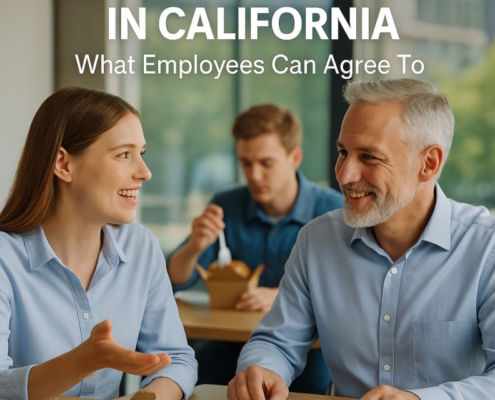
Meal Break Waiver in California: What Employees Can Agree To

Predictive Scheduling Laws: State and City Requirements for Employers
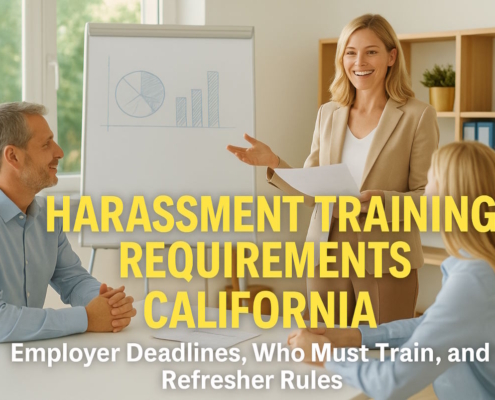
Harassment Training Requirements California: Employer Deadlines, Who Must Train, and Refresher Rules

Inside Sales Exemption California: Rules on Pay, Breaks, and Commissions

How Many Hours Can a Volunteer Work per Day in California? Laws, Limits, and Rights Explained

Show Up Pay California: Employee Rights for Being Sent Home Early or Given Short Shifts

Can Managers Take Tips in California? Laws, Tip Pools & SB 648

Can Owners Take Tips in California? A Complete Guide to State Tip Laws and Employee Rights

Right to Disconnect Laws in California: AB 2751 for Employers and Employees

Defamation California: Key Laws, Legal Defenses, and Damages Explained

What Is a Level 1 Background Check and How It Differs from Level 2
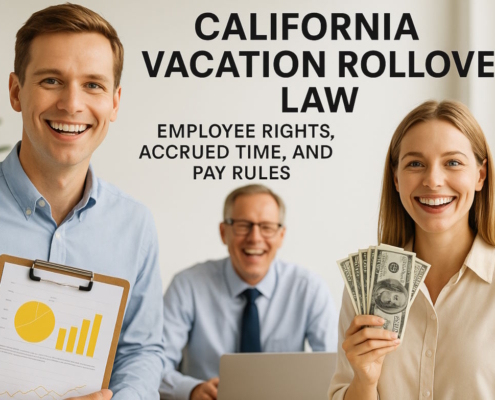
California Vacation Rollover Law: Employee Rights, Accrued Time, and Pay Rules

SB 553 CA: New Workplace Violence Prevention Requirements for California Employers in 2025

Labor Code 226.7: California Meal and Rest Break Requirements and Employer Penalties

Building an Onboarding Packet That Welcomes and Retains Employees

Complete Guide to New Employee Paperwork: Required Forms and Documents for 2025
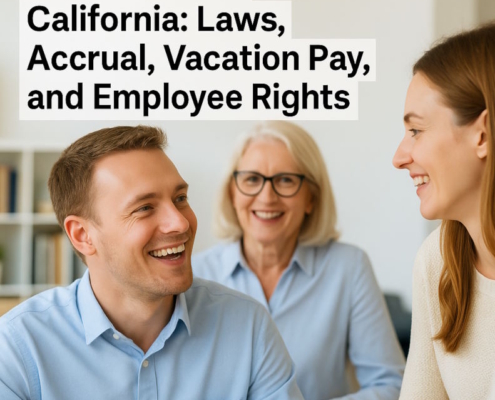
Paid Time Off California: Laws, Accrual, Vacation Pay, and Employee Rights

Can employers test for THC in California for hiring and workplace safety?
See all articles: Business | Corporate | Employment
